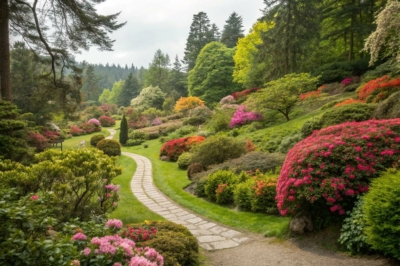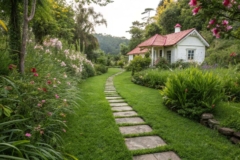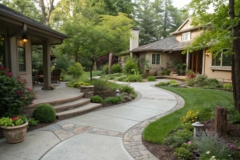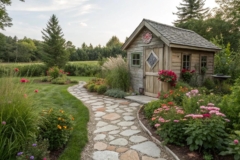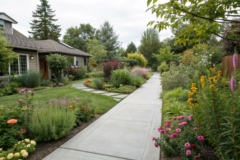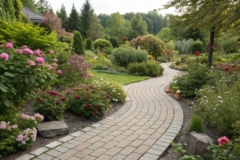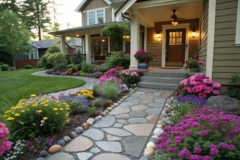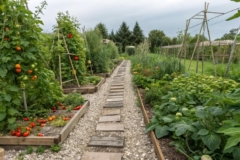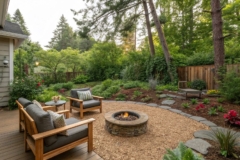1. Herringbone Pattern for Elegance
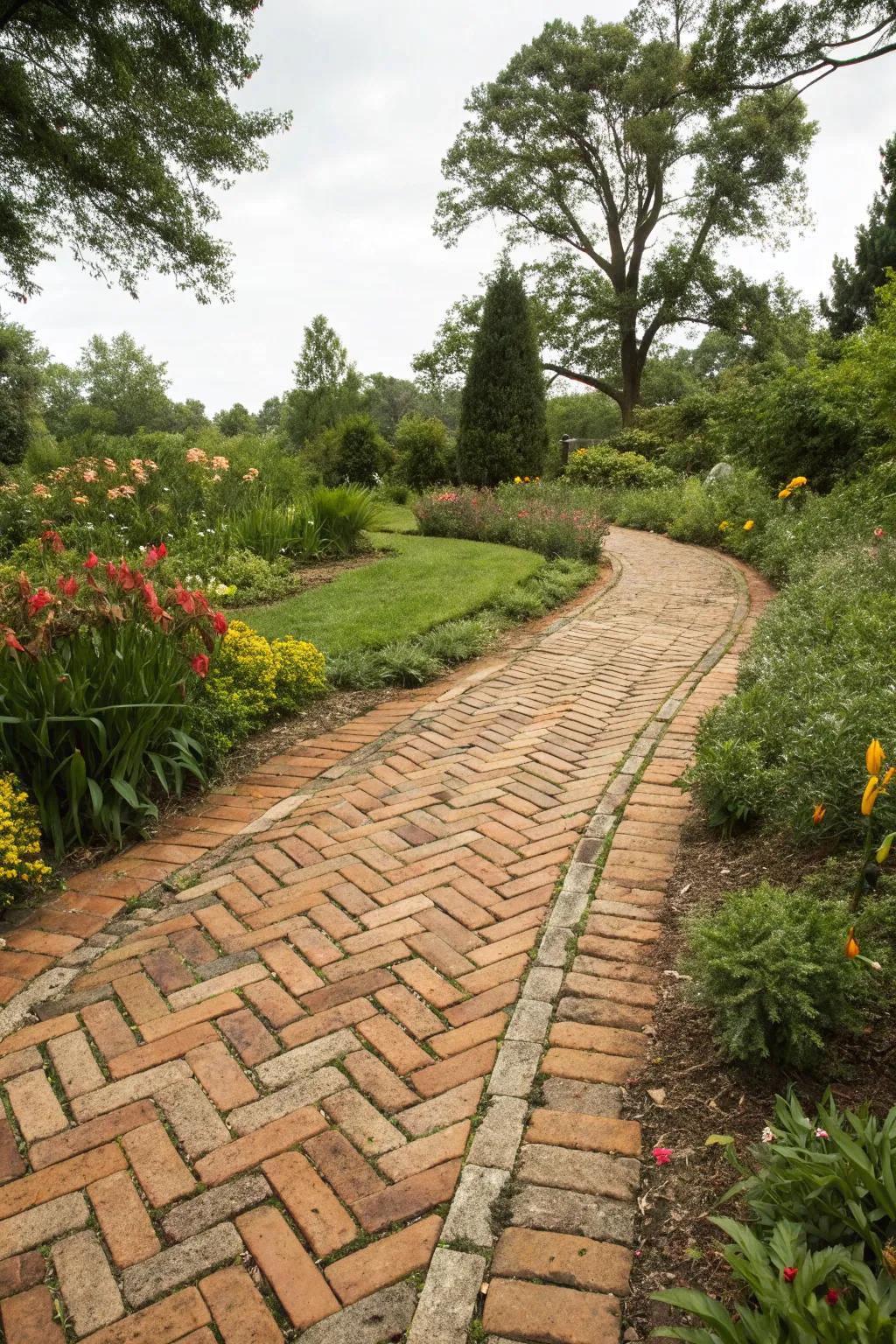
The herringbone pattern is a classic for a reason. It adds an elegant twist to paths, making even simple materials look posh.
A few relevant products:
- Brick Pavers for Herringbone Pattern: Transform your garden path with classic brick pavers, adding timeless elegance and charm.
- Outdoor Landscaping Edging Stones: Enhance path borders with edging stones to complement your herringbone pattern beautifully.
- Garden Pathway Sand Base: Create a sturdy, level base using quality sand for a lasting herringbone pathway.
2. Mix Materials for Texture
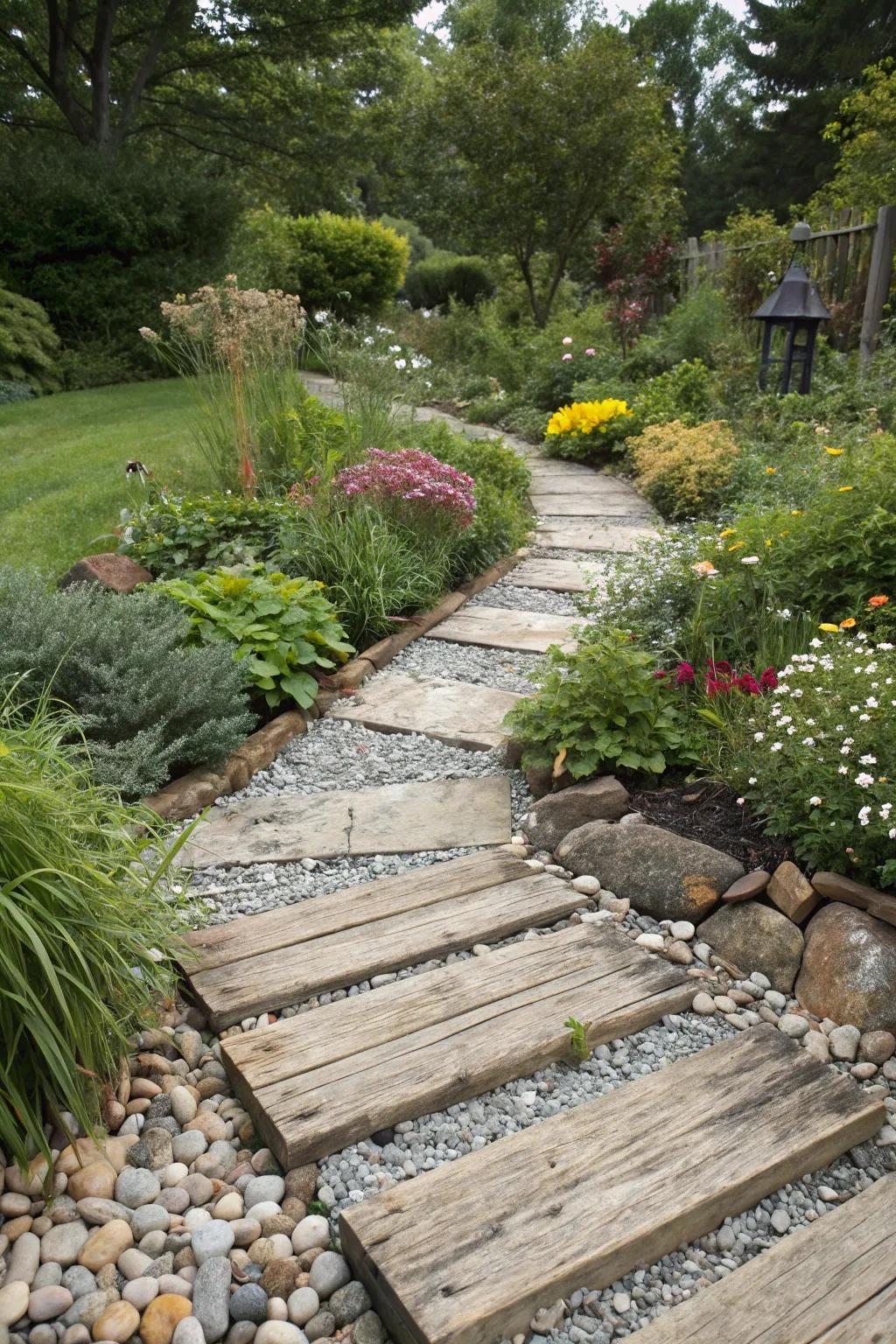
Why stick to one material when you can mix it up? Combining wood, stone, and gravel creates a rich tapestry of textures that’s simply stunning.
Some ideas to consider:
- Wooden Garden Pathway Decking: Enhance your garden with these durable wooden pathway planks for an organic touch.
- Natural Stone Paver Set: Create stunning texture with natural stone pavers that complement any garden design beautifully.
- Decorative Gravel for Landscaping: Add depth and texture using decorative gravel for a balanced and aesthetic garden pathway.
3. Paths around Raised Garden Beds
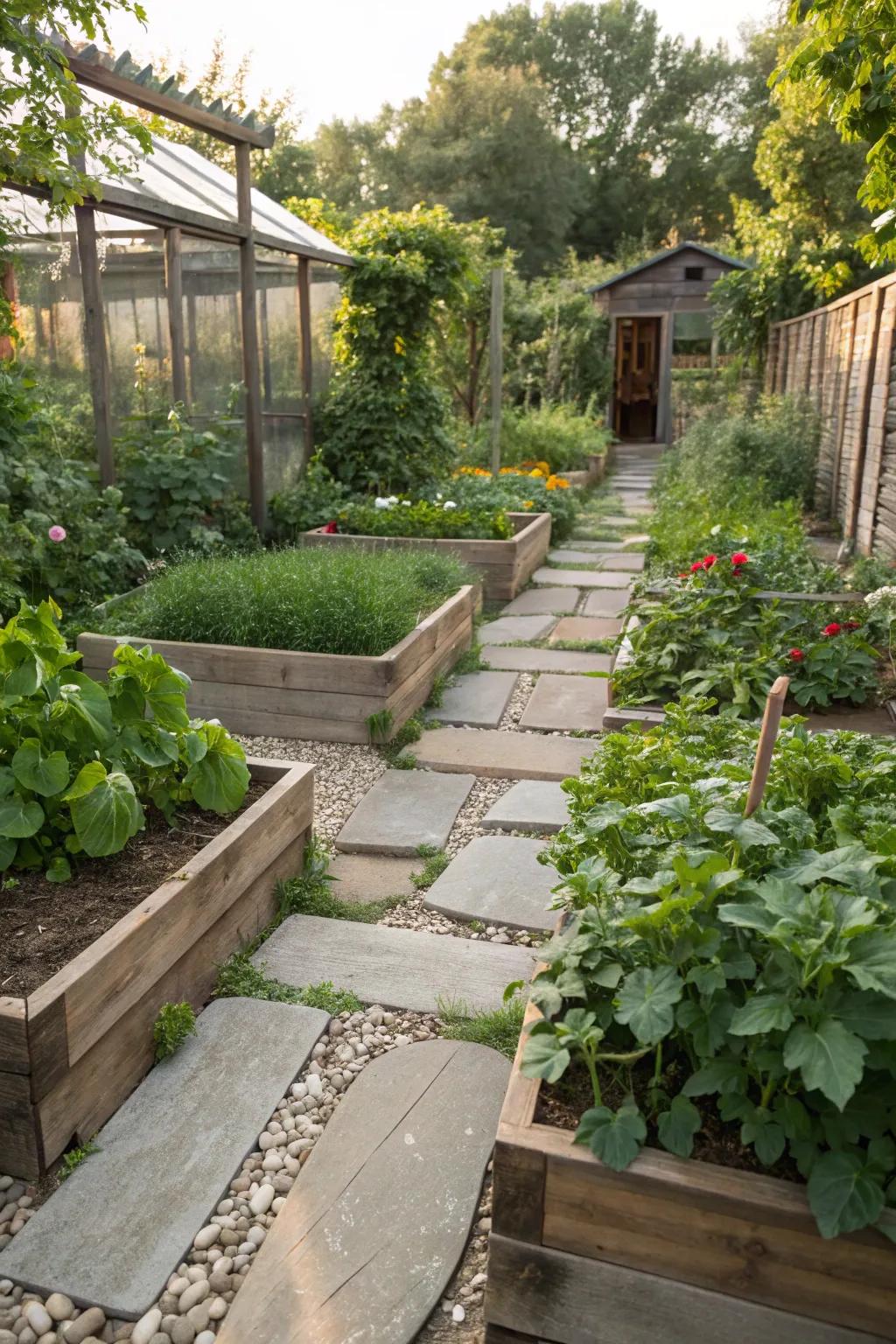
Incorporating pathways around raised beds isn’t just practical; it’s also beautiful. It makes tending to plants a breeze and frames your garden perfectly.
Possibly helpful picks:
- Garden Stepping Stones: Elevate your garden’s aesthetic with durable stepping stones placed between raised beds.
- Pea Gravel: Create charming pathways with pea gravel, enhancing both drainage and visual appeal.
- Garden Edging: Define and beautify your pathways with flexible and easy-to-install garden edging.
4. Integration with Lush Vegetation
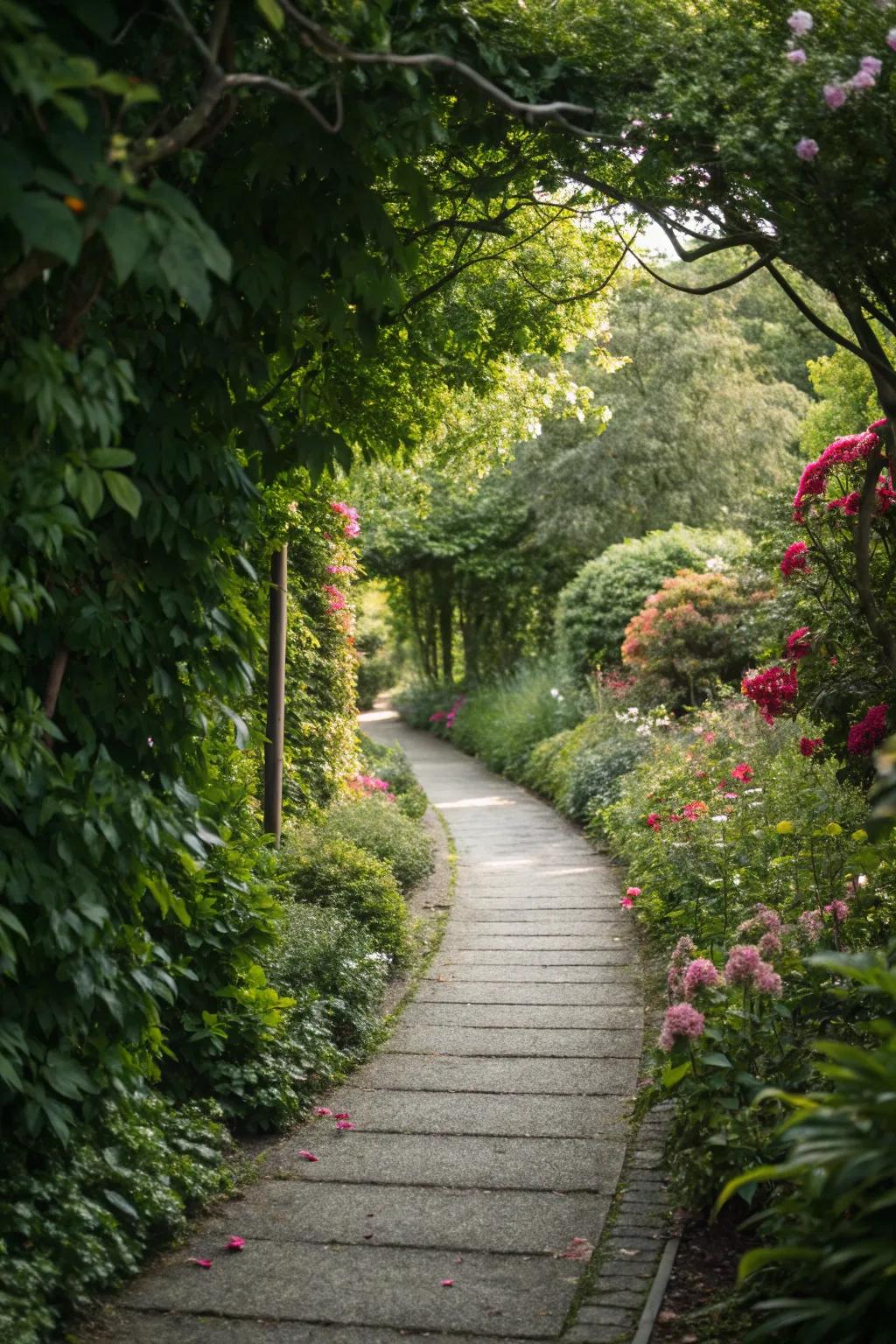
Pathways surrounded by lush plants can feel like an adventure. I love how the vegetation overflows, creating a secret garden atmosphere.
Check these products out:
- Decorative Garden Arbor: Enhance your pathway with a charming arbor, perfect for climbing plants and added elegance.
- Solar-Powered Pathway Lights: Illuminate your garden path with eco-friendly solar lights, blending seamlessly with lush greenery.
- Outdoor Plant Trellis: Support your lush vegetation with a stylish trellis, creating stunning vertical garden displays.
5. Modern Geometric Designs
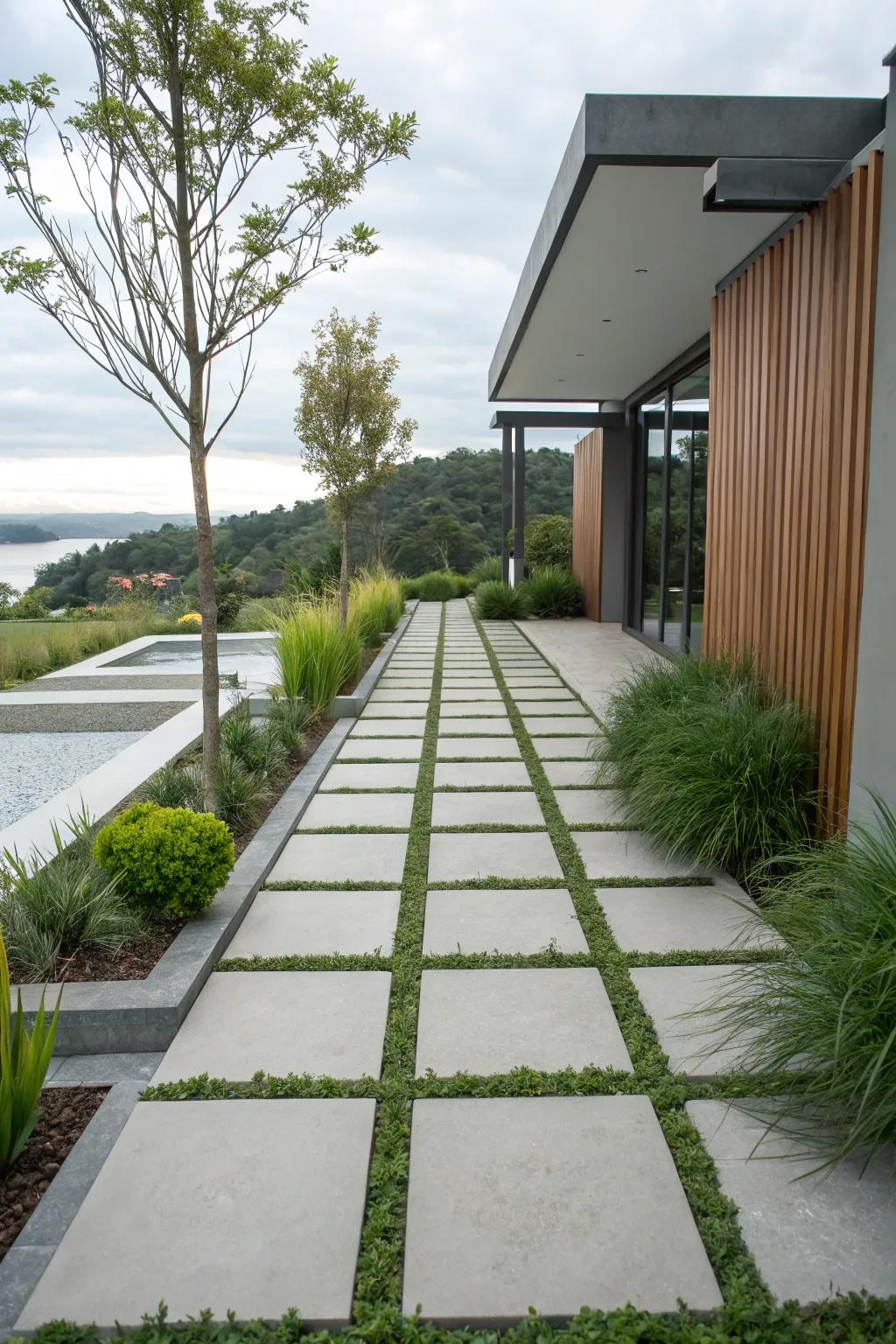
If you’re into clean lines, you’ll love geometric designs with paving squares or concrete. They give a garden a sleek, contemporary edge.
You might like:
- Concrete Paver Stones: Transform your garden with sleek concrete paver stones for a contemporary geometric look.
- Metal Edging for Pathways: Define clean lines in your pathway with durable metal edging for a refined finish.
- Decorative Gravel: Enhance your modern garden with decorative gravel for added texture and style.
6. Stepping Stones with Grass
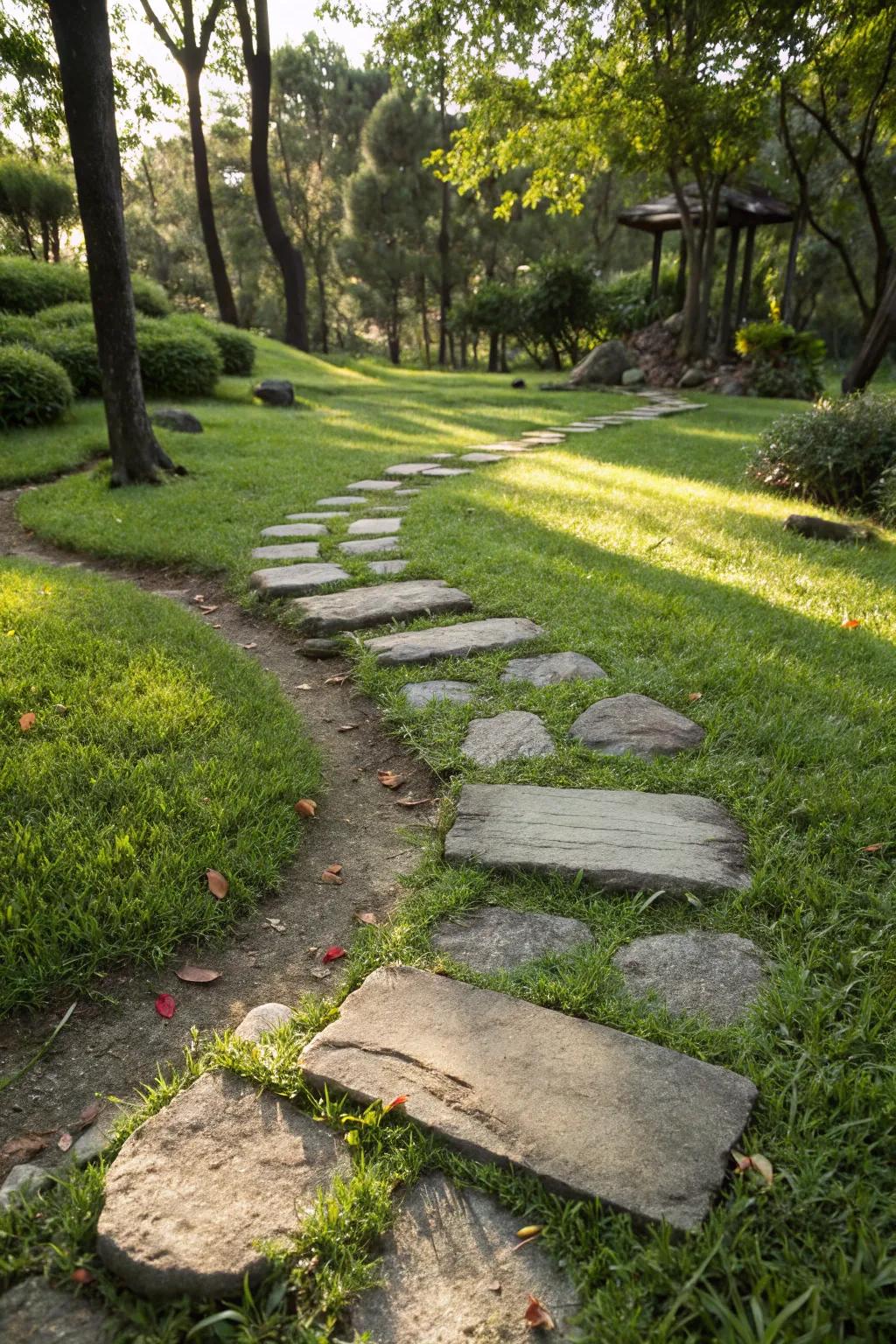
For a more organic look, try stepping stones with grass peeking through. It creates a playful vibe and reminds me of walking through a storybook meadow.
A few things you might like:
- Natural Stone Stepping Stones: Enhance your garden’s charm with natural stones, creating an inviting and whimsical walkway.
- Grass Seed for Lawn Repair: Fill gaps around stones with lush grass, creating a seamless and vibrant pathway.
- Garden Path Lighting: Illuminate your pathway with gentle lights for a magical evening garden experience.
7. Embrace Natural Stone Paths
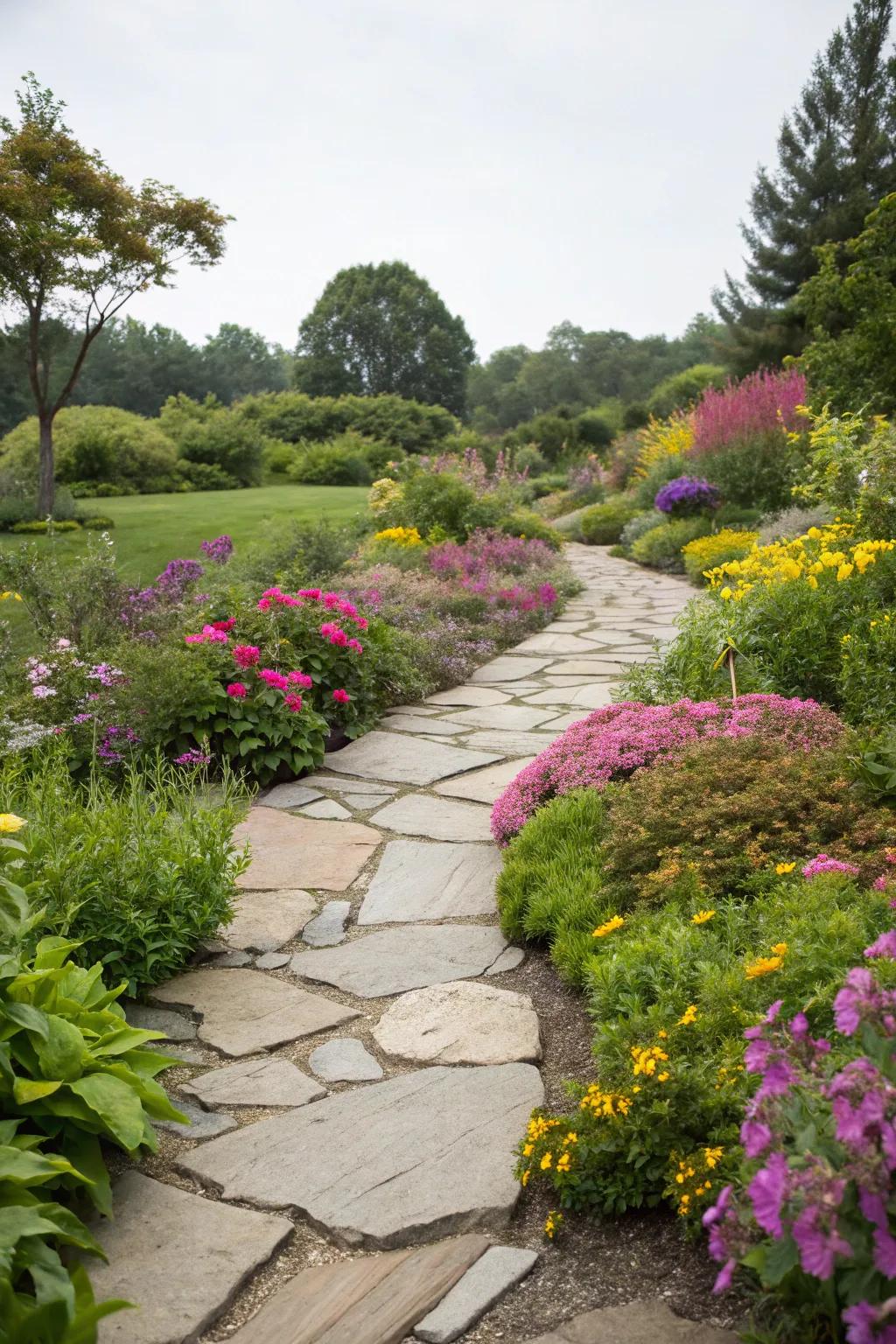
There’s something about natural stone that just feels right in a garden, don’t you think? I love how the irregular shapes blend into the landscape, adding a touch of rustic elegance.
May just do the trick:
- Natural Stone Stepping Stones: Add rustic charm to your garden with these beautifully textured natural stone stepping stones.
- Stone Pathway Edging: Define your garden path with elegant stone edging, blending seamlessly into the natural landscape.
- Garden Pathway Gravel: Enhance the longevity of your stone path by adding decorative gravel between stepping stones.
8. Use Lighting for Ambiance
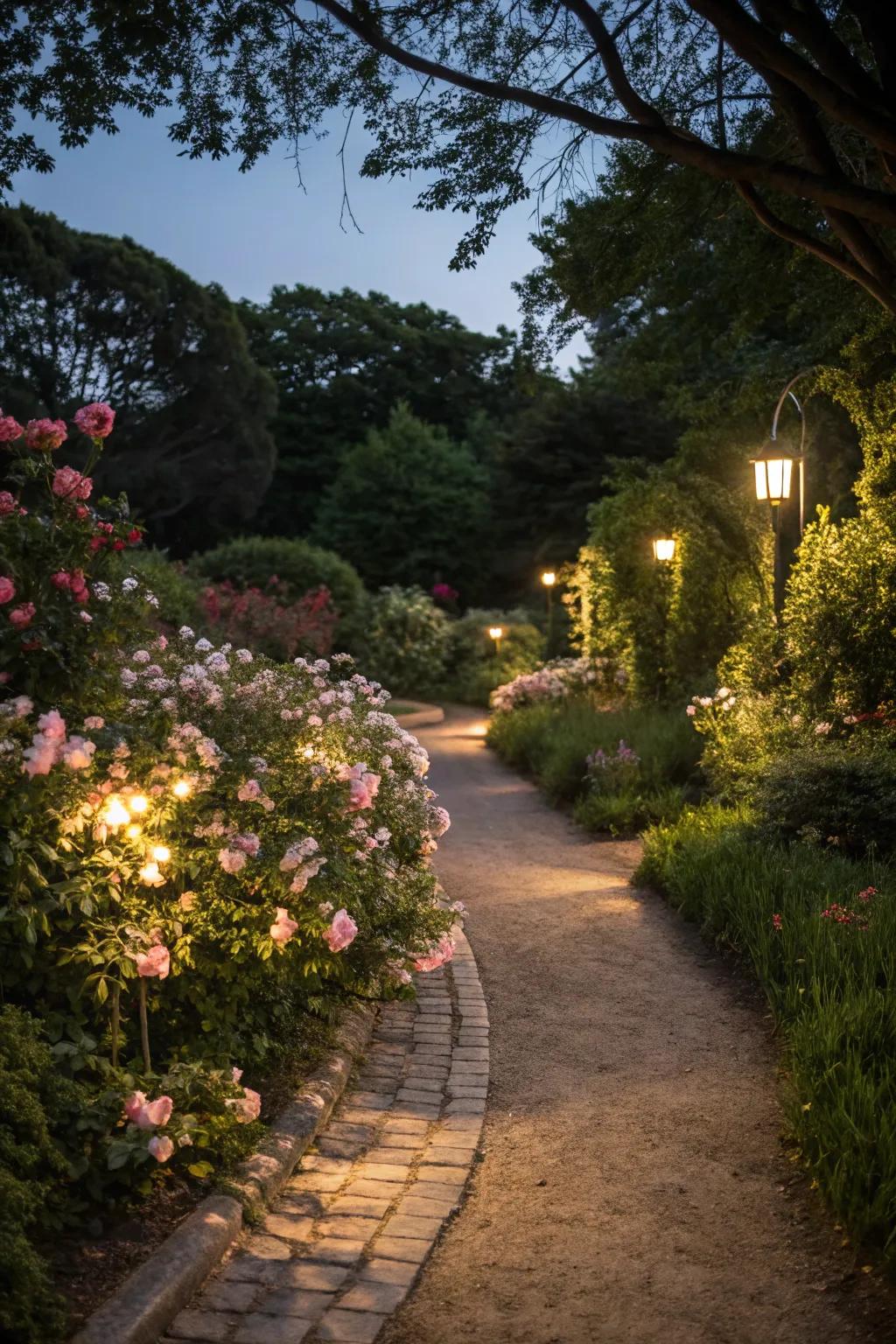
Adding lighting along a path isn’t just practical—it’s enchanting. I love how lights create a cozy, inviting atmosphere after dusk.
Consider these options:
- Solar Pathway Lights: Illuminate your garden path with eco-friendly solar lights for a charming evening glow.
- LED Garden Spike Lights: Enhance garden aesthetics with adjustable LED spike lights that highlight your landscape beautifully.
- Battery-Powered Lanterns: Create a vintage feel with versatile battery-powered lanterns perfect for any garden pathway.
9. Charming Brick or Cobblestone Paths
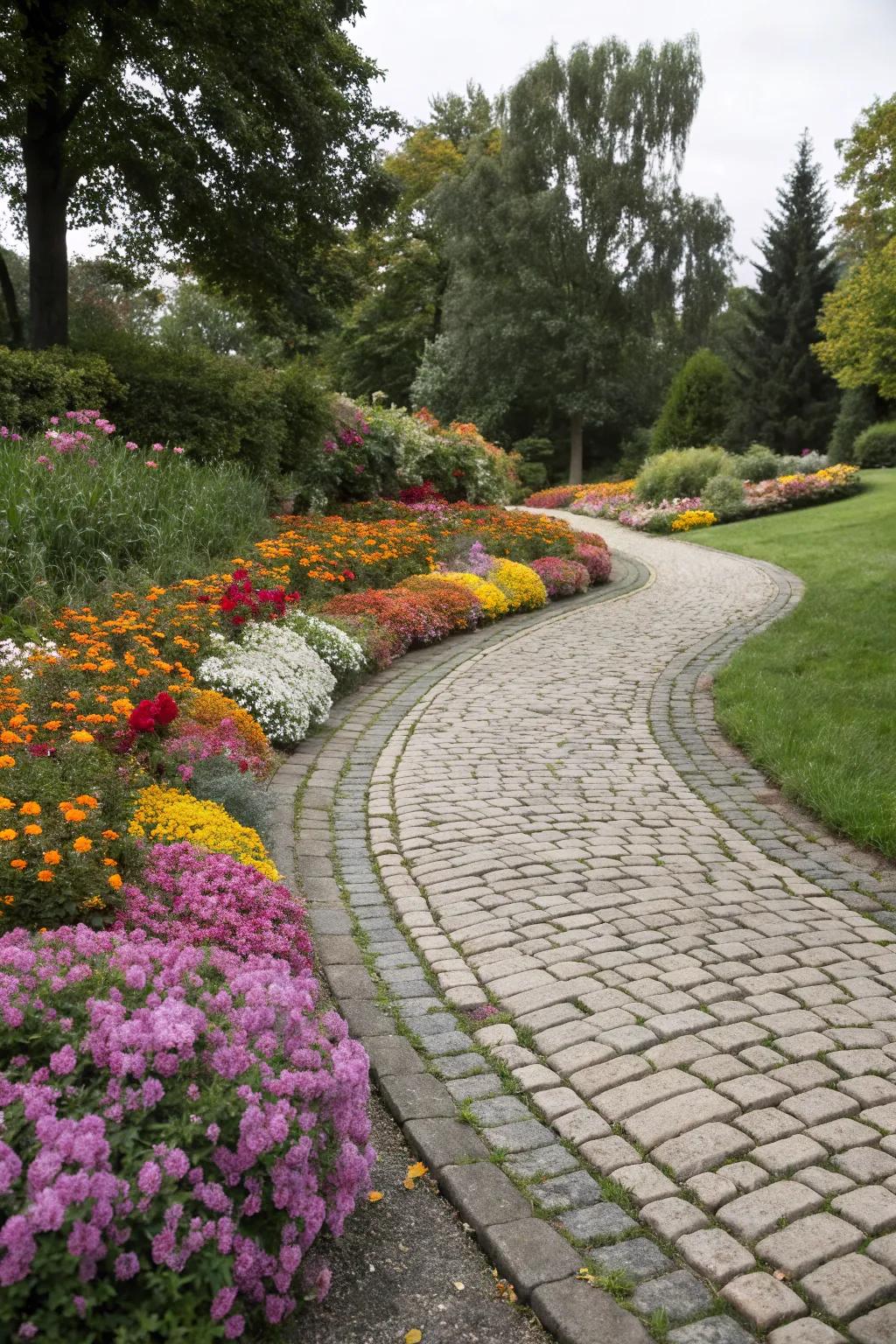
There’s something timeless about brick and cobblestone paths. They remind me of quaint European villages and add a classic touch to any garden.
Check if these fit your needs:
- Cobblestone Kits: Transform your garden with classic cobblestone kits that offer enduring charm and elegance.
- Brick Pathway Molds: Create your own brick paths effortlessly with these reusable pathway molds.
- Garden Edging Stones: Enhance your pathway edges with durable stones for a neat and polished look.
10. Add Decorative Accents
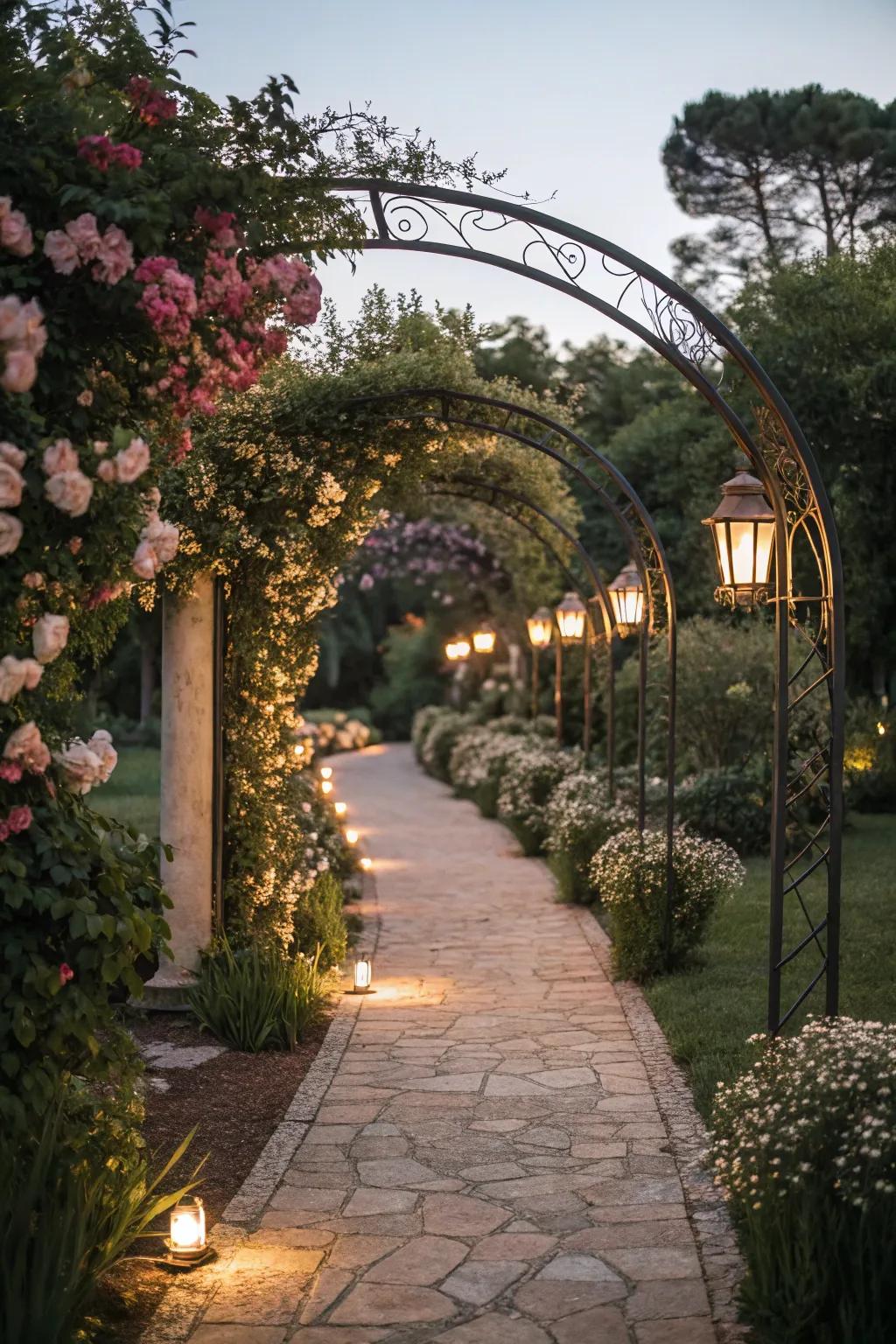
Why not spice up your path with some decorative accents? Archways or garden lights can transform a simple path into a magical journey.
Some handy options:
- Garden Archway Trellis: Enhance your pathway with a stunning garden archway, perfect for climbing plants and roses.
- Solar Pathway Lights: Light up your garden path with eco-friendly solar-powered pathway lights for a magical ambiance.
- Decorative Garden Lanterns: Add elegance to your path with decorative lanterns, offering timeless style and soft illumination.
11. Decorative Concrete Patterns
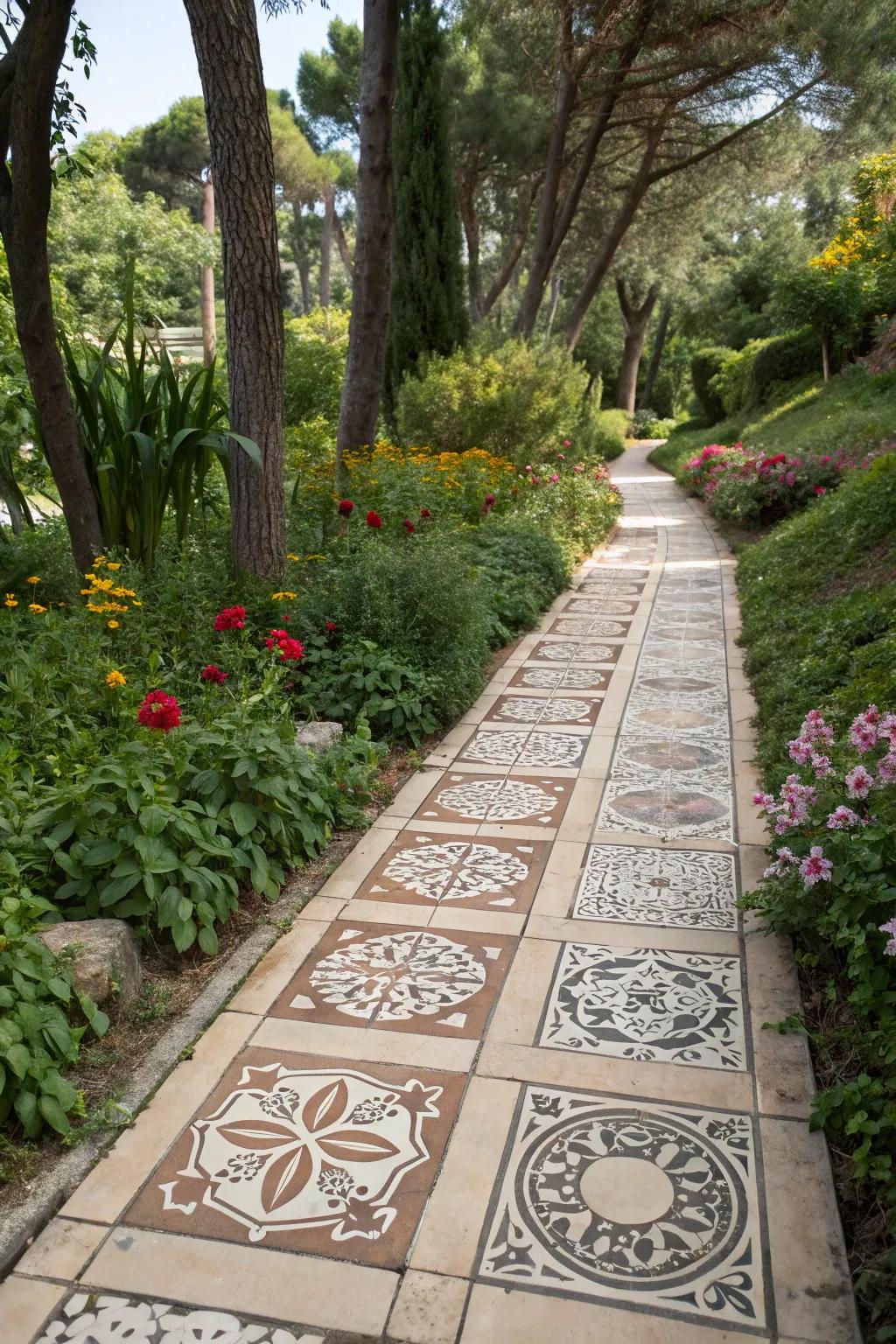
Concrete doesn’t have to be boring! Try decorative patterns to add flair and sophistication to your garden path.
Maybe worth checking out:
- Decorative Concrete Stencils: Enhance your garden path with intricate stencil patterns for a personalized and elegant look.
- Concrete Patio Mold: Transform your garden path with reusable molds that create stunning concrete patterns effortlessly.
- Concrete Coloring and Stain Kit: Add vibrant hues to your garden path with easy-to-use concrete stains and color kits.
12. Curved Pathways for Intrigue
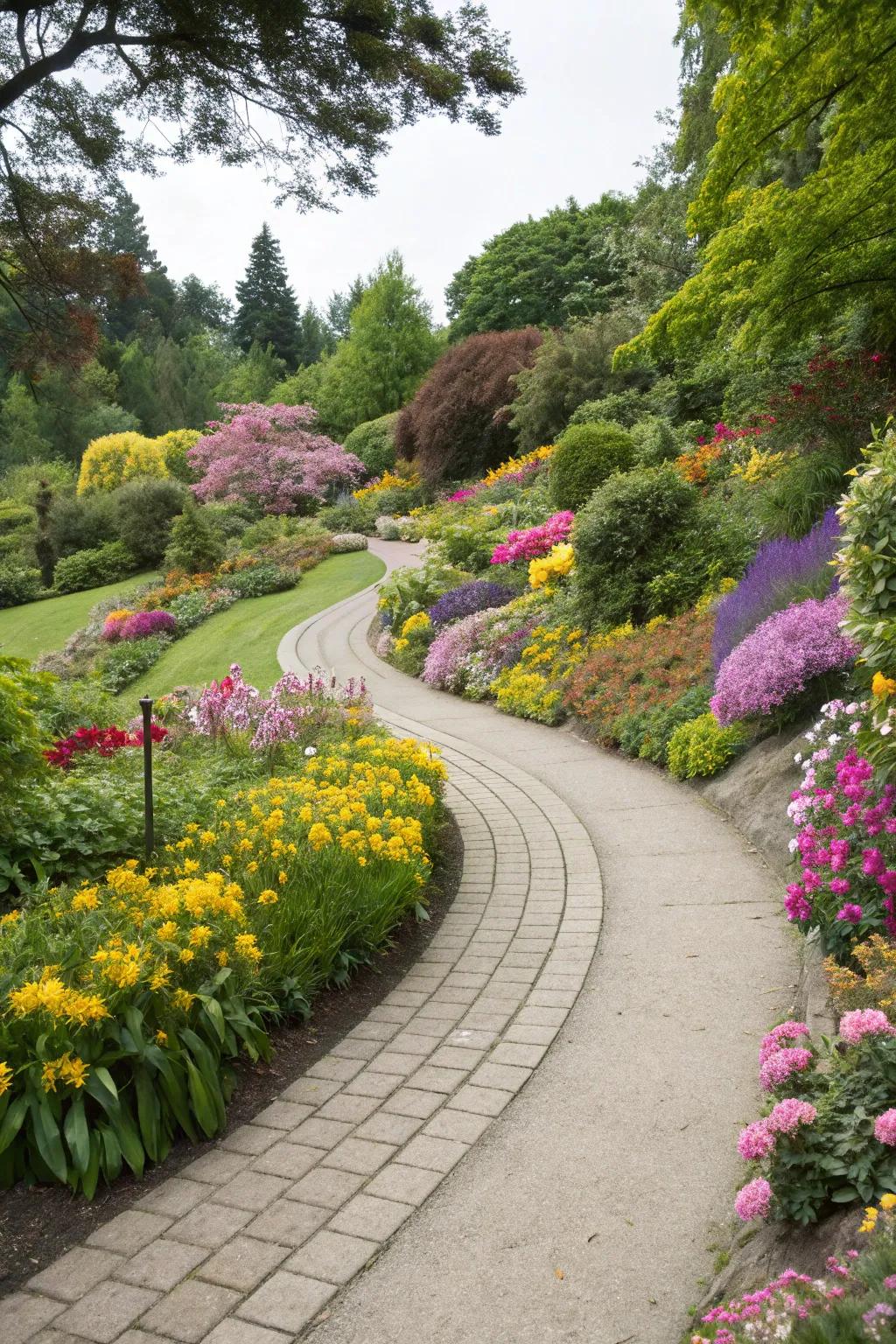
Curves invite exploration and mystery. I adore how a curved path can make a garden feel more expansive and intriguing.
Possibly handy products:
- Outdoor Garden Pathway Lights: Illuminate your curved garden paths with enchanting outdoor pathway lights for a magical evening stroll.
- Interlocking Garden Pathway Bricks: Create stunning curved paths with versatile interlocking bricks, enhancing your garden’s visual appeal.
- Decorative Garden Edging: Define your curved pathways elegantly with decorative edging, adding style and structure to your garden.
13. Edging with Plants

Edging paths with plants can soften hard lines and add a burst of color. I find it makes paths feel more alive and vibrant.
Products that could assist:
- Perennial Flowering Plant Mix: Add vibrant colors to your garden path with perennial flowers that bloom throughout the seasons.
- Garden Border Edging Plants: Define your garden pathway with beautiful border plants, creating a structured yet natural look.
- Low-Maintenance Shrubs: Choose easy-care shrubs that provide lush greenery and a perfect backdrop for pathway edging.
14. Rustic Wooden Paths
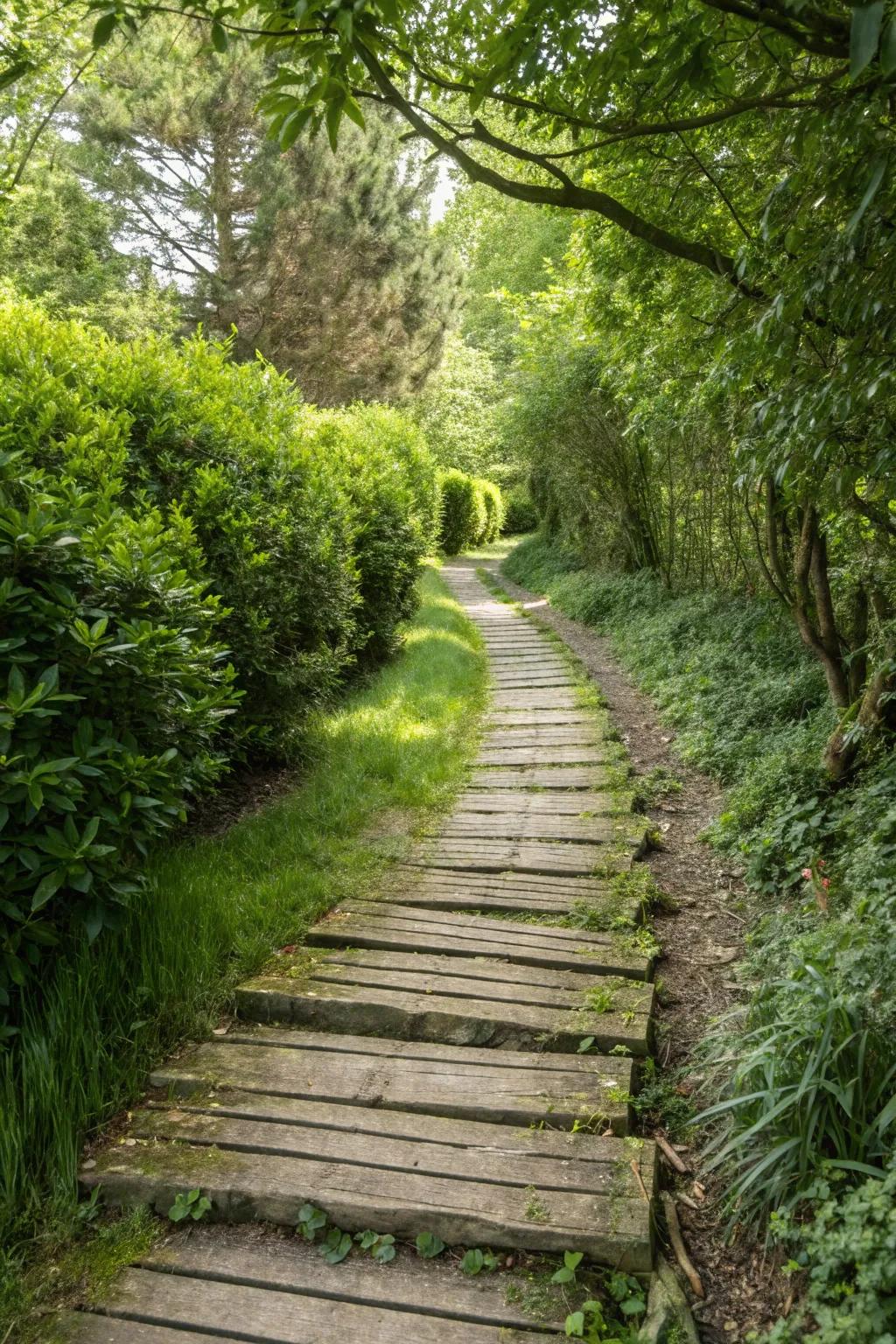
For a rustic vibe, try using wooden planks or logs. They blend into natural settings and create a cozy, woodland feel.
Explore these options:
- Wooden Garden Pathway Kits: Transform your garden with easy-to-install wooden pathway kits for a natural, rustic look.
- Landscape Timber Edging: Define your rustic paths with durable timber edging for a clean, professional finish.
- Pressure-Treated Wood Planks: Select pressure-treated wood planks for added durability and longevity in outdoor pathways.
15. Gravel Walkways for a Casual Feel
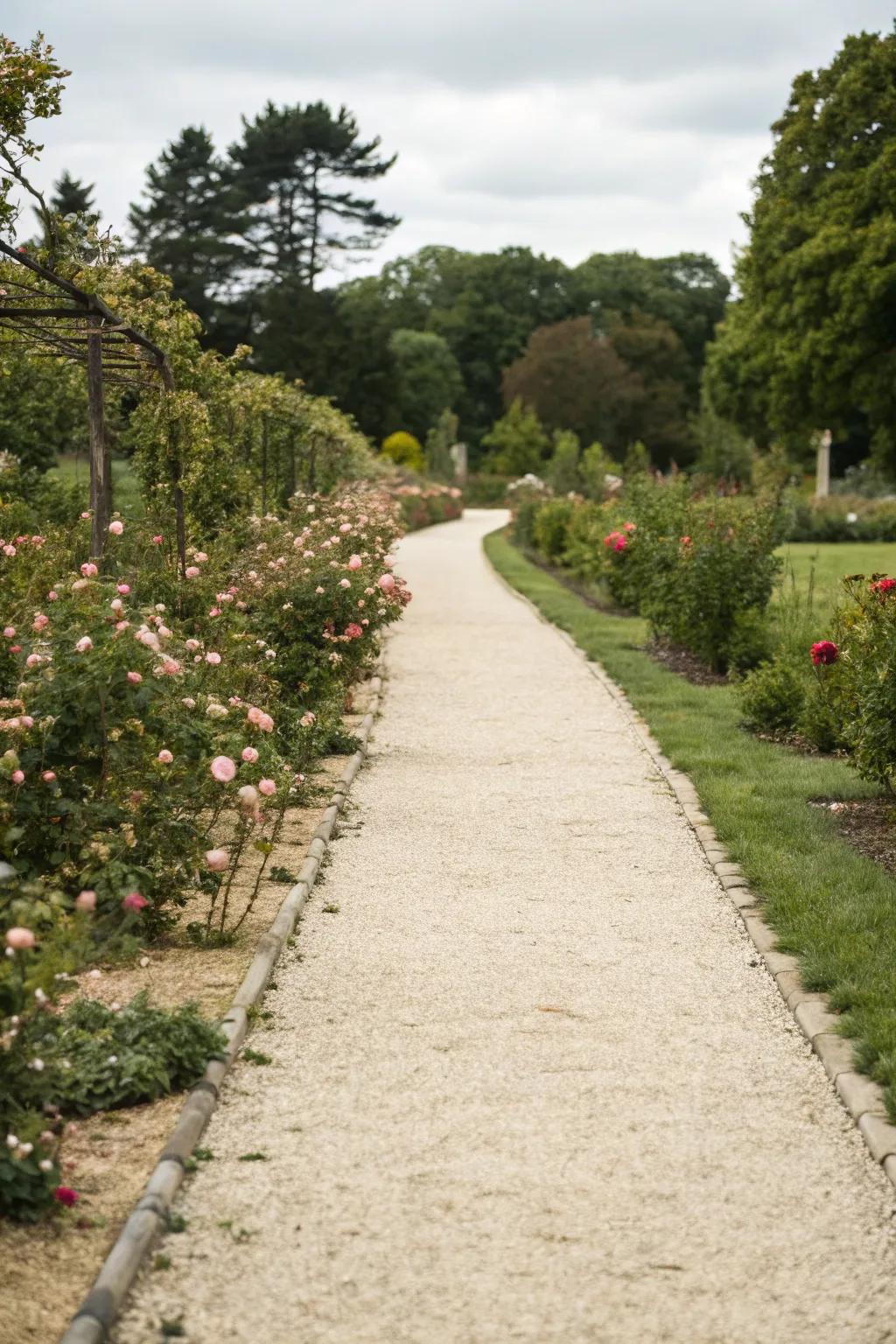
Gravel paths offer a casual, easy-going charm that I adore. Plus, they’re budget-friendly and super easy to maintain!
A few suggestions:
- Garden Gravel: Enhance your pathway’s charm with decorative garden gravel for a timeless, natural look.
- Landscape Edging: Define your pathway with durable edging for a clean, polished appearance that’s easy to achieve.
- Weed Barrier Fabric: Prevent unwanted growth beneath your gravel walkway with an efficient weed barrier fabric.
16. Woodland Pathways
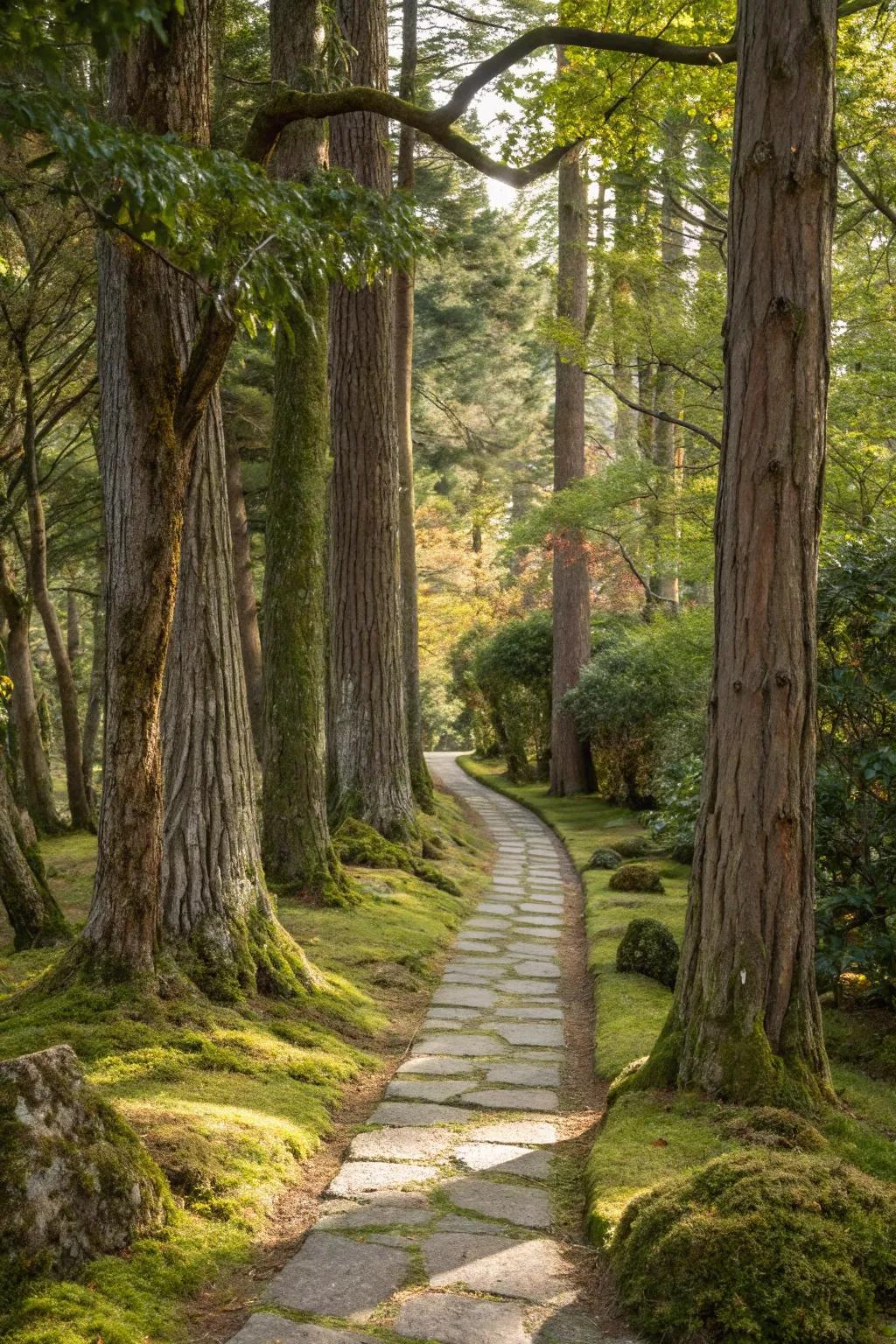
In shady areas, use bark or woodchips for a woodland path. It’s a natural way to create harmony with the environment.
Might be a good match:
- Natural Woodchips Mulch: Enhance your garden’s charm with organic woodchips, blending effortlessly with the natural scenery.
- Bark Pathway Edging: Define your woodland path with rustic bark edging, adding a touch of natural elegance.
- Garden Path Lights: Illuminate your woodland path with subtle garden lights, creating a magical evening ambience.
17. Create a Boardwalk Path
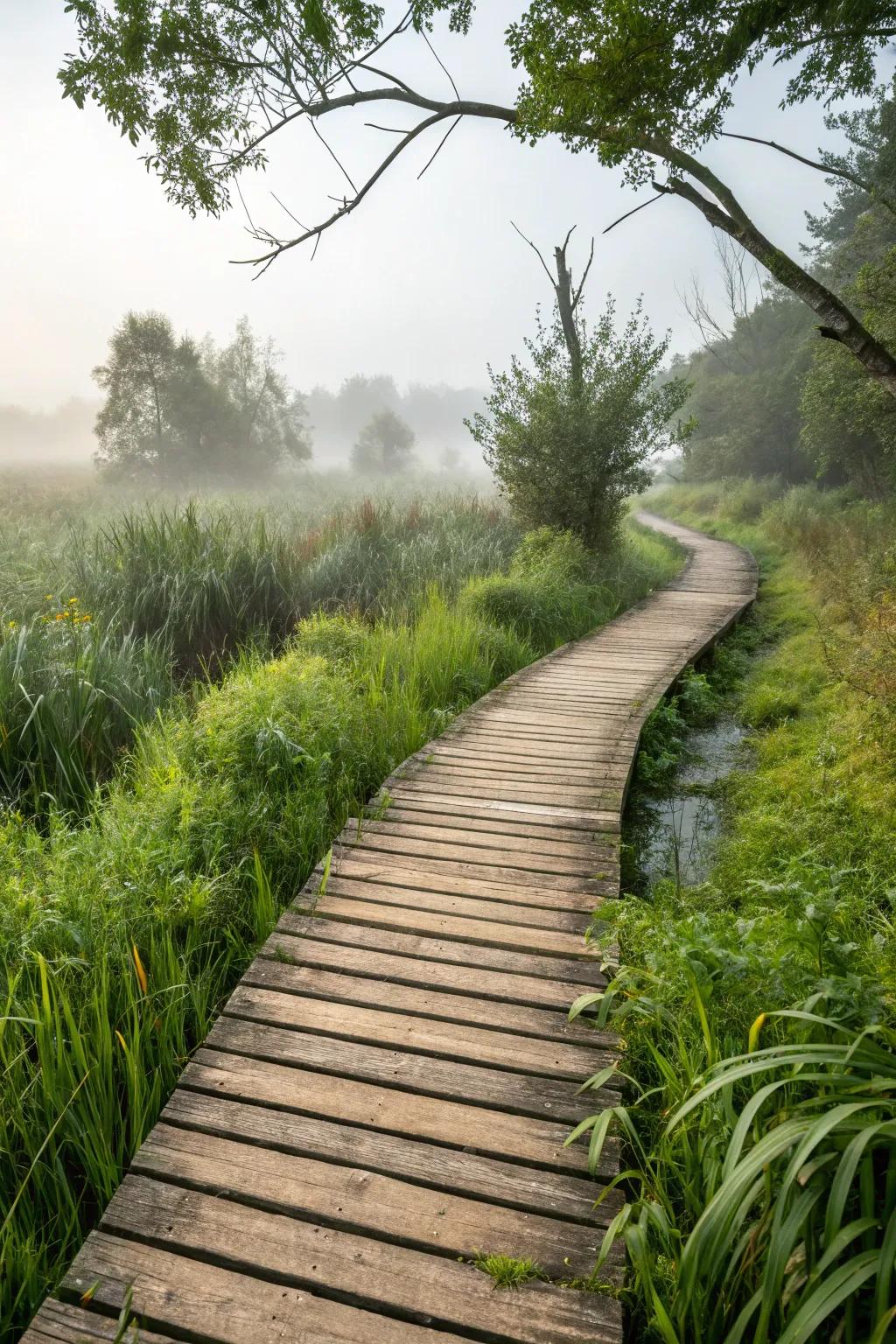
For wet gardens, a boardwalk path is a fantastic solution. It keeps your feet dry and adds a delightful boardwalk vibe.
A few choices to try:
- Wood Deck Tiles: Enhance your garden with durable wood deck tiles, perfect for a stylish boardwalk experience.
- Outdoor Pathway Lights: Illuminate your boardwalk path with energy-efficient outdoor pathway lights for added safety and ambiance.
- Anti-Slip Decking Strips: Ensure safety on your boardwalk path with high-quality anti-slip decking strips in wet conditions.
18. Mowed Grass Paths
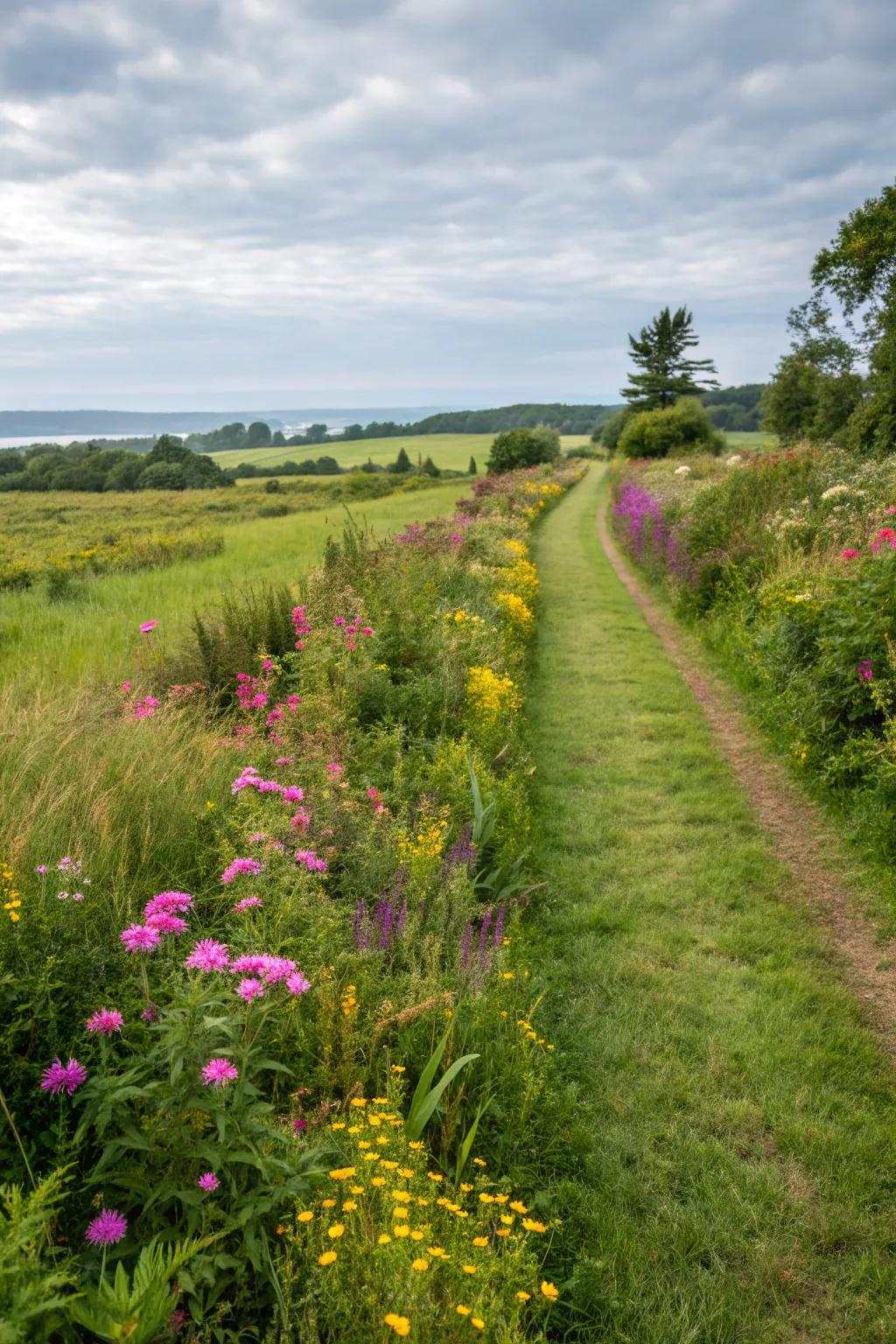
For a simple yet effective option, mow a path through your lawn. It’s eco-friendly and gives a meadow-like feel that’s perfect for larger spaces.
These products might be useful:
- Lawn Mower: Perfect your garden path effortlessly with an efficient lawn mower designed for larger spaces.
- Grass Seed Mix: Enhance your path’s beauty with a grass seed mix for lush and inviting lawns.
- Edging Tool: Define your garden path with a high-quality edging tool for clean, professional results.
